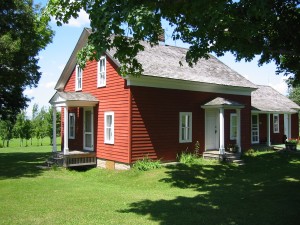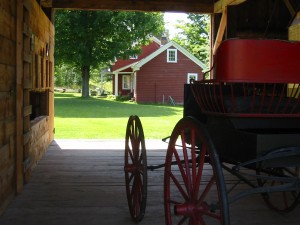Today I was on Facebook, trying to share a link about an author reading at a bookstore. The bookstore is in a city where a friend of mine, who likes the author too, lives, so I wanted to let her know about it. I clicked the “Share” button for the link, then looked at my options: share in a message, share on my own timeline, share on a friend’s timeline. None of those applied, I thought. I wanted to share it on my friend’s WALL.
Oh, right. There is no more wall. There is now only timeline.
I ultimately made a successful share (on my friend’s TIMELINE), but it reminded me of a Little House issue. Names are big things. When you’re a writer thinking about your audience, you consider names a lot. Names have importance. They help us associate one thing with another–be it a place, an emotion, a person, whatever. Changing names changes our association. In Boston, where I’m from, two event centers, two in Boston and one in the suburbs, have had their names changed more times than I can remember in the past 20 years. But regardless of what they are called now, I will always think of them by their original names: Harborlights, Great Woods, the Boston Garden.
The folks who did such a wonderful job preserving the site at Malone made one misstep, I think. The site was always known as the Almanzo Wilder Farm; to this day, the url remains almanzowilderfarm.com. And that makes sense. Almanzo’s a farmer boy. We read about his ninth and tenth years in the book Farmer Boy, which was all about farming, farming, farming—to a more marked degree than the Little House series en masse.
But while the tagline—boyhood home of Almanzo Wilder—is still the same, the powers that be have in the past few years decided that the homesite is now the “Wilder Homestead.”
The Wilder Homestead?
Now, I’m no expert on the Homestead Act, but I do know it was a west-of-the-Mississippi thing. The Wilder property was never the “Wilder homestead.” But it was, quite plainly, the “Wilder farm.” James Wilder did not have to prove up on a claim, the way Pa did. He was just farming his land, land he already owned.
So why the change? I’ve never asked. And I’ve never made a big deal about it (although now, someone may Google it and find this post—ah well). I don’t want to make a stink or be disrespectful. But I can’t help wondering about their reasoning. Did they think it would sound more like “Ingalls Homestead,” thus increasing their tourist draw? Did they feel left out because all the other homesites—well, the ones in Walnut Grove and De Smet—had homesteads associated with them?
I don’t know.

The Wilder Farmhouse is the only home mentioned in the Little House books that is still standing on its original foundation.
The thing is, fans love Malone. And they love it for what it is. It may be out of the way for the folks who go to the Midwest sites, but it’s not out of the way for East-coasters. And besides, it’s not like the other homesites. On certain days, heck, it may well be my favorite. The lovely red farmhouse is the only home mentioned in the Little House books that’s still standing on its original foundation. No other building—not even in De Smet—can claim such a distinction. The grounds surrounding the farmhouse are gorgeous—lush and green (at least in summer, when I’ve visited), with the only noticeable sound the gentle, non-Dakota winds whispering through the trees. And across the street and down the path is Trout River, still flowing, just as we pictured it when we read Farmer Boy.
It doesn’t need a name change to prove its homesite mettle.
The powers that be can call the homesite in Malone whatever they like. But I’m always going to call it The Wilder Farm.

